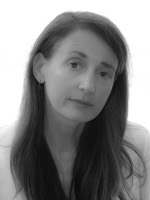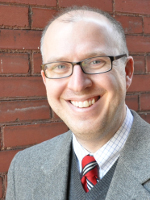We call them the Leadership Group, and together they work hard to lead the AAJ into the future, keeping us relevant and organized. But what about them individually? In this issue, we have taken the opportunity to ask them separately about the value of—and their experience at—the Knowledge Leadership Assembly (KLA), a gathering of leaders from many of the AIA communities.
 Amy Finlayson
Amy Finlayson
This was my first opportunity to attend KLA as an incoming member of the AAJ Leadership Group. I went in unsure of what was in store, and the AIA did not disappoint. The conference for 2016 was held in Washington DC and had a large turnout. The KLA discussion groups were well organized and had enthusiastic participation from all the KLA members. Additionally, the opportunities to learn about the variety of knowledge communities, their goals and their successes were inspiring. Through scheduled discussions and networking, shared interests and new opportunities for cross-participation emerged, always focused on the betterment of the profession and the role of the architect.
Looking forward, I hope the KLA presents more opportunities to understand key objectives for each Knowledge Communities and perhaps an opportunity for the Knowledge Academies to present their missions to the larger group so that the members can continue to seek out and innovate on shared objectives.
 Melissa Farling
Melissa Farling
If you ever have a chance to attend an AIA Knowledge Leadership Assembly, I highly recommend the experience. I have had the opportunity to attend the past 2 years as an incoming member/member of the AAJ Leadership Group. Basically, it is an opportunity for “Knowledge Community Leaders, Board Knowledge Community Representatives, and AIA Staff to network, share knowledge and best practices, and build coalitions over the course of three days”.
I am always inspired by talking and sharing with other architects and staff who are deeply committed to the profession. What strikes me the most is although we represent distinct committees or boards, we share common goals and challenges. The past two years I have participated, there has been more and more discussion about how the groups can share resources, plan joint conferences, and partner to better elevate the profession and make a positive impact on the individual experience and on our communities. We discuss outcomes.
For example, how can the Public Architects Committee and the Committee on Architecture for Education partner to create better learning environments. How can the Academy of Architecture for Health and the Academy of Architecture for Justice partner to work with communities to address the issue of the increasing number of those diagnosed with mental illness being incarcerated? And shouldn’t other committees be involved – Public Architects, education architects, Design for Aging committee, and the Interfaith Forum be part of the discussion?
These are just a few examples, but those few days always remind me why I became an architect. We just have to follow through, and as a volunteer organization with everyone already stretched, that is the hardest part. We recognized this at the last assembly, and I am optimistic we will continue to do better and make positive contributions!
 Greg Cook
Greg Cook
Attending the 2016 Knowledge Leaders Assembly in Washington, DC was particularly exciting for me because it gave me the opportunity to interact with representatives from the other Knowledge Communities and gain understanding of the types of issues that we have in common, and that are unique. What I found is that we have far more in common than in difference, and that these types of discussions tend to reveal opportunities for collaboration that might not always be evident.
 Linda Bernauer
Linda Bernauer
This was my last opportunity to attend KLA as a member of the AAJ Leadership Group. KLA is always an adventure. I have been able to travel to Seattle, Atlanta, Minneapolis, Denver and Washington DC to attend the meetings, which have been as diverse as the locations where they have been held. As with any volunteer organization, the AIA demands and holds our full attention while we are participating in this knowledge-sharing event. We come home exhausted, yet invigorated to be able to implement new ideas into our own Knowledge Communities.
KLA has changed over the last five years from one of presentations prepared by national and local AIA representatives suggesting the integration of emerging professionals, sustainability & resilience, research, and technology into the building-type specific Knowledge Communities. The AAJ has embraced and in many ways led the process. The meetings are now nearly fully interactive, with small group discussions around topics that have relevance to all, and each participant is asked to lead a discussion.
Some ideas embraced and implemented by the AAJ over the last five years include:
- The participation of an emerging professional as an active member of the Leadership Group
- The requirement for natural light in our conference venues
- The integration of sustainable practices and COTE Top Ten requirements into our awards program
- Co-hosting events at the national convention with the Public Architects Committee
- Inviting the Project Delivery Knowledge Community and Technology in Architecture Practice to deliver presentations at AAJ Conferences
There are opportunities for even more cross-participation with other Knowledge Communities on the horizon. Collaboration is key as we work together to solve not only architectural challenges, but societal challenges as well.
 Erin Persky
Erin Persky
The Knowledge Leadership Assembly provides an unmatched opportunity for AIA Knowledge Community representatives to come together to share ideas and knowledge and to seek out collaboration opportunities. This year’s KLA was my second opportunity to participate, and having recently transitioned to Chair of the AAJ Leadership Group, I had particular incentive to obtain the most information and inspiration possible from the KLA workshops. As expected, KLA exceeded my expectations.
The three-day working sessions are organized as short, 25-30 minute round table discussions with members of various knowledge communities consisting of topics ranging from “Public Policy and the KCs” to “Getting content on AIA.org” to “KC Financial Management” and everything in between. During these sessions we are able to both learn how other KCs function relative to these topics, and share how we manage the issues we face.
As Linda mentioned, time and again the AAJ has been a leader in our embrace of sustainability, research, and emerging professional development. Still, we obtained important and useful information, such as strategies for more effective and fundraising and sponsorship targeting, tips to broaden the reach of our AAJ newsletter, examples of how other KCs have kept themselves up-to-date on relevant public policy, and much, much more.
As an “emerging professional” (EP) myself, I’d like to praise both the AIA and the AAJ in particular on our strong integration of EPs into many areas of thought leadership within our KC. If you don’t know, the definition of “emerging professional” within the AAJ is different from that of the AIA broadly - an AAJ Emerging Professional is defined as anyone with 0-10 years in the justice sector. As such, our EPs typically have substantial architectural experience and are particularly knowledgeable, both about the architecture profession broadly and about the justice sector.
Our subcommittees have truly lead the charge of integrating and leaning on AAJ EPs, and I believe that the future of justice architecture is brighter as a result. (If you’re interested, the AAJ journal has featured numerous EPs over recent years. Feel free to browse the journal archives to view these profiles.)
My experiences at the past two KLAs have shown me that the AIA is not a top-down organization, but rather is truly run by the members. We hope that the AAJ emulates this example. Please contact any member of the LG if you have any questions, concerns, or recommendations for the AAJ.
(Return to the cover of the 2016 AAJ Journal Q3 issue)